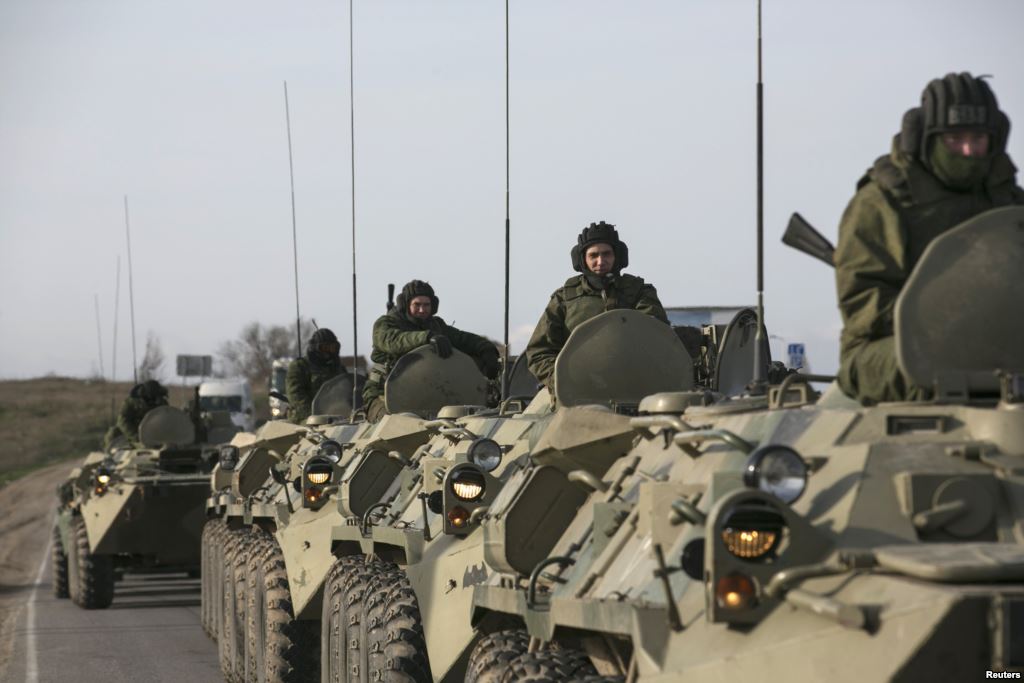Are the West and Russia heading for a showdown over Ukraine? The preponderance of the evidence would strongly suggest that the answer to this question is yes. Moscow-backed rebels in eastern Ukraine are intensifying their offensive against the government in Kiev. It appears as if the strategy now is to occupy a swathe of territory that will create a land bridge between Russia and Crimea.
NATO is moving forces, including U.S. Army units, and establishing logistics support facilities in Eastern Europe. The European Union and the United States are considering additional sanctions on Moscow. The former has also offered significant economic aid to Ukraine. The White House is reported to be considering requests from NATO’s Supreme Commander, U.S. General Philip Breedlove, to provide the Ukrainian military with significant amounts of lethal, albeit defensive, military hardware. There are other issues waiting in the wings such as Moscow’s violation of the treaty banning intermediate range nuclear delivery systems and its support for the rogue regime in Teheran.
Russian President Vladimir Putin shows no sign of backing down. In response to earlier rounds of sanctions, Moscow banned imports of food from the West. Russia has massively increased its aerial “exercises” near NATO countries. Just last week, the U.K. scrambled fighters when several Russian Bear bombers, nuclear-capable platforms, flew within a few tens of miles of British territory. Russian fighters have repeatedly buzzed U.S. warships and surveillance aircraft. It’s beginning to feel like a new Cold War.
Unlike Europe, which is critically dependent on Russia for natural gas, the United States is relatively immune to Moscow’s threats of retaliation, except in one area, space launch. One of the two primary U.S. space launch vehicles, the Atlas V, uses a Russian engine, the RD-180, for its first stage. Kremlin officials have hinted that they might halt sales to the U.S. of the RD-180, crippling this country’s military and intelligence space programs. Following a recent catastrophic launch failure, Orbital Sciences decided to buy a smaller Russian rocket engine, the RD-181. This means that two out of three (or four if you count SpaceX) U.S space launch vehicles are dependent on Russian technology and Moscow’s good will.
Viewed against the background of a confrontation between Russia and the West that shows every indication of intensifying, the continuing U.S. dependence on Russian rocket engines for a critical portion of U.S. military space launches looks increasingly like an unacceptable strategic liability. Congress recognized this reality in the FY2015 National Defense Authorization Act which requires the Air Force to develop an indigenous replacement by 2019 — the date by which our current inventory of RD-180s is likely to run out.
Building a domestic replacement for the RD-180 is about more than just addressing a strategic vulnerability. It has been a very long time since the United States invested in a new rocket motor. Changes in the posture of U.S. strategic forces and in NASA plans for manned space flight have also reduced production rates for rocket motors. Both the design capabilities and production base are in danger of atrophying. Yet, the need is apparent not only to support our continuing access to space but also in anticipation of having to replace both the land and sea-based legs of the strategic deterrent beginning in another 15 years or so.
The Air Force has money in its FY2016 budget to jump start the development of a domestic alternative to the RD-180. The Air Force plans to initiate a competitive procurement for a new engine in the next year. It is vital that these funds be protected and that a domestic company be selected soon to provide a new engine for the Atlas V.











